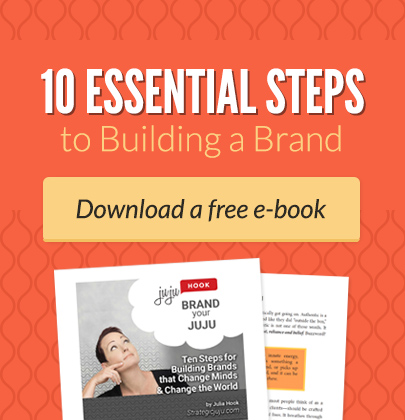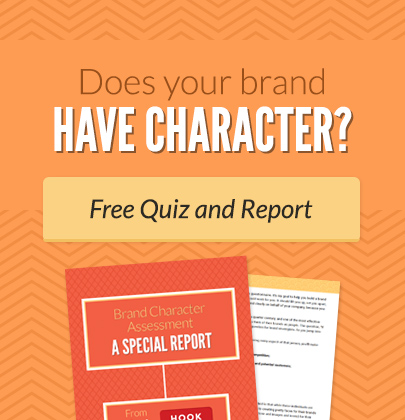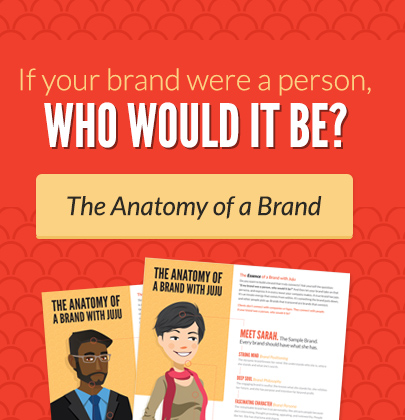If you’ve been around my blog, my website or my Facebook page for long, you’ll know that I’m a stickler for strategy. I love a good plan. I’m wild about doing things for a good reason. And where branding is concerned, I don’t make a move without a sound strategy.
But you know what? Oddly enough, this is a very UNCOMMON position in the world of entrepreneurs and small businesses. “Strategy first,” has a bit of a bad rap.
And that’s a shame. Because “strategy first” is really the only way to go.
Every day I watch people – in and outside the world of branding and marketing – pay for tactics and forego strategy. They’ll buy the tangibles (the things they can see and touch) but they won’t invest in the strategy that makes those tactics successful.
I’m going to take this analogy into the world of athletics for a moment, because this is a world I’ve absorbed by osmosis, supporting my husband’s Ironman career over the past five or six years. And I can very often get clients to understand these strategy issues if they think of business as a race, and their branding and marketing tactics as a way to “win” the race.
These are the kinds of things I see in sports forums online, and hear in conversations at Ironman races. And I’m not talking about professional athletes. These are amateurs who enjoy a sport, and invest tons of money to be truly good at it.
An athlete will spend $10,00 or more on a race bicycle. That may sound insane, but these bikes are a major investment. Now, that same athlete refuses to pay (or doesn’t understand he SHOULD pay) for a professional “bike fit” by someone who can truly adjust the set-up of his bike to his own size, stature and style of pedaling. A professional racing bike is a tool. It’s a tactic. But the strategy in racing is how and why the athlete uses the tool. So if this athlete sits too high on the bike and experiences wind drag, or if he pedals inefficiently, throwing his knees out to the sides because the pedals are too close to the seat, the power of the $10,000 tool becomes irrelevant – because it’s never put to use. The athlete has an amazing tool that brings him zero advantage – and it might even be a disadvantage.
Let’s talk further about this same guy. He invests in a training plan online, and every day he swims, bikes and runs, and feeds the statistics from his training into an online log. He willingly paid for the training program and the log. Those things are tangible. They feel “worth it.” And he puts the training hours in. Those hours are also tangible. But he won’t pay for a coach. Maybe he feels like he’s not a “serious” enough athlete to warrant a coach. Maybe he doesn’t understand that he needs one. But without someone knowledgeable to analyze his training performance, provide feedback, and adjust the workouts in real time as the athlete moves forward, there’s no improvement. He may even regress in his fitness level or his performance. The training plan is a tool. But without a strategy, it can be entirely ineffective and can actually work against his performance.
One more… just so you can see how this same athlete keeps himself from winning by making “halfway” investments. He invests in a nutrition plan. (I see this happen, by the way, to lots of non-athletes, as well.) He buys an online food plan with a menu and a shopping list, and he fuels his workouts according to this “one-size-fits-all” plan, without ever having tests done to understand his body composition or his metabolism or his ability to make use of the fuel he’s consuming. And worse, he doesn’t understand how he’s “supposed” to feel from the food, so he’s not sure if his lack of performance is coming from the food, or from his fitness level, or from his skill level. He’s paid for the plan, but he can’t put it to use, because he doesn’t know how – or why – that tactic is the right tactic for him.
So here’s what this athlete has done:
He’s invested in amazing TOOLS. And his unwillingness (or ignorance) about the first step in using each one of those tools (a strategy) cripples the tools, and can cripple his performance.
Strategy is about using your resources to your best advantage to ensure an outcome in an unsure situation.
Strategy is about choosing the RIGHT TOOLS to achieve your goals.
Tools, in and of themselves, have zero value. You may win with a tool and no strategy. But you’ll win by luck. And in business, we don’t rely on luck.
And now you’re asking:
How the hell does this Ironman stuff relate to my brand and my business?
This relates to your brand and your business in EVERY way. I watch entrepreneurs make these “half-way” investments all the time.
And here’s what I hear them say when they do it:
I’m just a little guy. I don’t understand strategy. I’m a coach, a stylist, a designer, a writer, a retail store owner, a trainer, a music teacher, a real estate agent…. This stuff is too high-powered for me. It’s too complicated.
Wrong.
I’m sorry if that seems harsh.
But that attitude is flat-out wrong.
If you are investing ANY time or money in marketing and branding – and I do mean ANY time or money at all – you need to have a strategy to make those tools work properly. Otherwise, you’re driving down the street throwing hundred dollar bills out the window.
Like this:
A business owner invests in a logo or a visual brand before she creates an overall brand strategy. She gets something pretty – It may even be gorgeous and totally intriguing – but it has NOTHING to do with her overall brand position or brand promise. At best, it brings her no money. At worst, it actually drives customers away or attracts the wrong ones.
Or this: An entrepreneur works HARD to build a list. She invests in Facebook ads or spends tons of time blogging or giving away free content in exchange for names and email addresses. But the content she puts out is not closely related to what she sells or what makes her different from her competitors. So she has a list of names, but it’s a list of people interested in something else. The entrepreneur has invested in the “opt-in” tactic, with zero return on her investment.
Or this: An entrepreneur develops an online course or a program without discussing the content or the benefits with a group of potential clients. She creates this course (the tool) without understanding the goals, desires, fears and frustrations (the underlying strategic goal) of her audience. And when no one buys it, she’s exhausted and deflated. She’s made a significant investment in the tangible, and no investment in the intangible.
The price of poor strategy show itself in so many ways:
Re-work: If you’re “re-branding” or “re-designing” or “re-thinking” your offerings again and again, you’re wasting time, money, and effort. A focus on strategy first dramatically reduces re-work.
Opportunity cost: I don’t know about you, but most business owners I know have a finite amount of money to invest. If you invest that money in a tactic that’s not right for your business, you will waste the money. And the bigger question becomes: How ELSE could you have spent that money? What opportunities did you leave on the table? What did you miss, while you were shooting in the dark?
Lack of clarity: Man…. I see this so often. Entrepreneurs and small business owners work HARD. You get up every day and hammer away. You often work well into the night. But there’s no clarity on WHY you’re doing what you’re doing. So there’s a kind of wandering around… a walking in circles. I worked for a CEO once who called this phenomenon, “A lot of activity with no results.” Clarity comes from understanding. Understanding comes from research and planning. Plain and simple.
Misalignment: You develop a visual brand or a marketing tactic, and don’t carry it all the way through the customer experience. So a consumer comes to your website, gets a feeling or has a reaction, and responds by moving further. And when she experiences the actual product or has a “live” discussion with you, there’s a disconnect. And she feels truly disappointed. “I thought I was getting this… and instead, I’m really getting this.” Misalignment (or a disconnect) is the result of entrepreneurs giving up on the branding process (or thinking they’re finished) before they’re done. There’s no strategic plan.
Competitive disadvantage: You create your brand in a vacuum. It’s amazing, Funny, hip, attractive. But you’ve put it out there without understanding the competition. You’ve failed to ask the Million Dollar Brand Question: “Why would someone buy from my company, out of all the companies in the world?” And you have no idea what a buyer can get elsewhere for the same or a lower price. You may have actually built in a competitive disadvantage. You may have helped the next guy “win.” Game strategy… it changes that.
Start with strategy first. Every time.
Why am I doing this?
What’s my objective?
What does my market want?
How will I stand out from the competition?
How will I know if this is working?
Why would someone buy from me, out of all the companies in the world?
And if you’d like a leg up, some free tips and strategies, then meet me next Thursday, Feb 4, at 1 pm or 7pm Eastern for a FREE webinar. I’ll show you the 7 Brand Mistakes that Cost you Clients, and I’ll give you a Flubproof Plan for Brands that Convert. I’ll show you how to create a strategy. (Sign Up Here.)
Are you sitting on a $10,000 bike with your feet too close to the pedals?
Share with me in the comments below.





love it!! Every single element is so right (and I also see the mistakes I have made!). I am starting a new business and I cannot wait for your webinar on the 4th!!!!
Hey, Liz! I’m so glad you’ll be at the webinar. And that you’re starting your business with “strategy first!” You won’t be sorry for a minute. I promise you. I’ll see you on the 4th. Woo-hoo!!
Hey Juju, as always really great value and well delivered. See you on the webinar chica.
Thanks, Jen! Looking forward to it!! See you there.
I love reading your posts and can’t wait for your webinar. Thanks for being up front with all of the mistakes we entrepreneurs are afraid to admit. We need more honest people like you to help us grow! See you Feb 4th:)
Aaawww, thanks, Marcia. I’m so grateful for your comments. I try to tell it like it is whenever I can — even though not everyone wants to hear it. (I bet my 14-year-old could use a little less honesty from me. ;)) I’m so glad you’ll be at the webinar. I’m super excited about it!